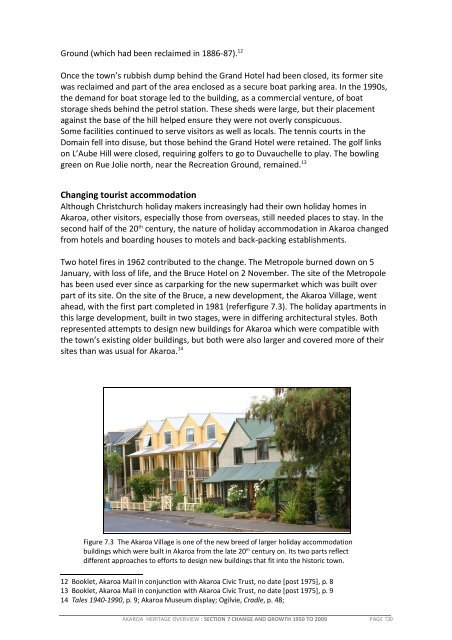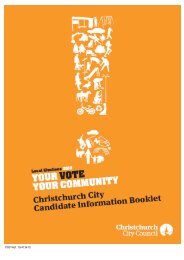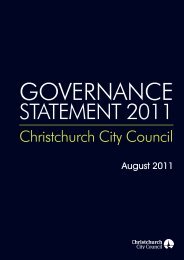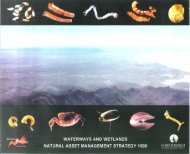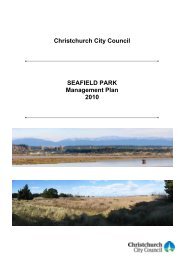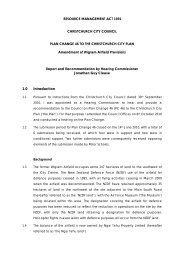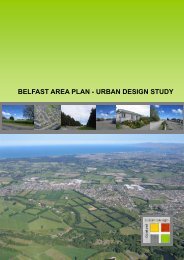Akaroa Historical Overview - Christchurch City Council
Akaroa Historical Overview - Christchurch City Council
Akaroa Historical Overview - Christchurch City Council
Create successful ePaper yourself
Turn your PDF publications into a flip-book with our unique Google optimized e-Paper software.
Ground (which had been reclaimed in 1886-87). 12<br />
Once the town’s rubbish dump behind the Grand Hotel had been closed, its former site<br />
was reclaimed and part of the area enclosed as a secure boat parking area. In the 1990s,<br />
the demand for boat storage led to the building, as a commercial venture, of boat<br />
storage sheds behind the petrol station. These sheds were large, but their placement<br />
against the base of the hill helped ensure they were not overly conspicuous.<br />
Some facilities continued to serve visitors as well as locals. The tennis courts in the<br />
Domain fell into disuse, but those behind the Grand Hotel were retained. The golf links<br />
on L’Aube Hill were closed, requiring golfers to go to Duvauchelle to play. The bowling<br />
green on Rue Jolie north, near the Recreation Ground, remained. 13<br />
Changing tourist accommodation<br />
Although <strong>Christchurch</strong> holiday makers increasingly had their own holiday homes in<br />
<strong>Akaroa</strong>, other visitors, especially those from overseas, still needed places to stay. In the<br />
second half of the 20 th century, the nature of holiday accommodation in <strong>Akaroa</strong> changed<br />
from hotels and boarding houses to motels and back-packing establishments.<br />
Two hotel fires in 1962 contributed to the change. The Metropole burned down on 5<br />
January, with loss of life, and the Bruce Hotel on 2 November. The site of the Metropole<br />
has been used ever since as carparking for the new supermarket which was built over<br />
part of its site. On the site of the Bruce, a new development, the <strong>Akaroa</strong> Village, went<br />
ahead, with the first part completed in 1981 (referfigure 7.3). The holiday apartments in<br />
this large development, built in two stages, were in differing architectural styles. Both<br />
represented attempts to design new buildings for <strong>Akaroa</strong> which were compatible with<br />
the town’s existing older buildings, but both were also larger and covered more of their<br />
sites than was usual for <strong>Akaroa</strong>. 14<br />
Figure 7.3 The <strong>Akaroa</strong> Village is one of the new breed of larger holiday accommodation<br />
buildings which were built in <strong>Akaroa</strong> from the late 20 th century on. Its two parts reflect<br />
different approaches to efforts to design new buildings that fit into the historic town.<br />
12 Booklet, <strong>Akaroa</strong> Mail in conjunction with <strong>Akaroa</strong> Civic Trust, no date [post 1975], p. 8<br />
13 Booklet, <strong>Akaroa</strong> Mail in conjunction with <strong>Akaroa</strong> Civic Trust, no date [post 1975], p. 9<br />
14 Tales 1940-1990, p. 9; <strong>Akaroa</strong> Museum display; Ogilvie, Cradle, p. 48;<br />
AKAROA HERITAGE OVERVIEW : SECTION 7 CHANGE AND GROWTH 1950 TO 2009 PAGE 130


